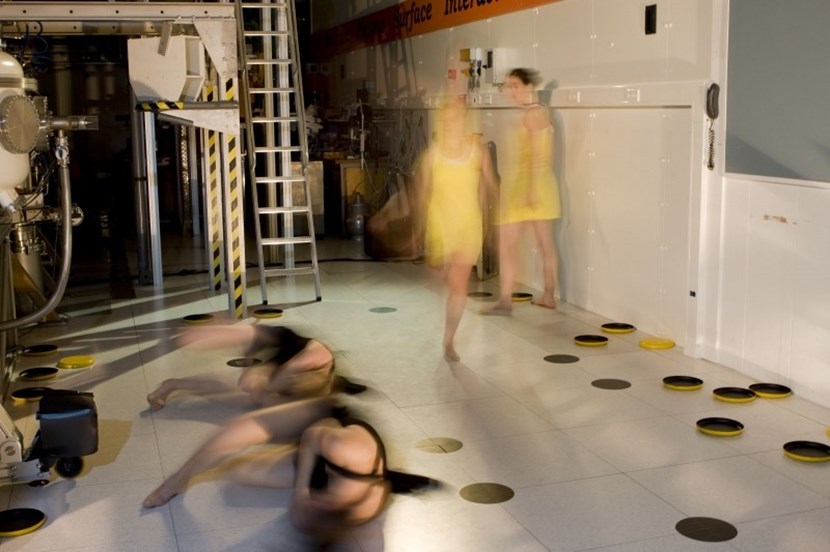ITER NEWSLINE
240
Dancing DT retention in tungsten!
Gieljan de Vries, FOM Institute DIFFER
Dancing DT retention in tungsten!

Tungsten atoms (dancers in black) in the fusion reactor wall get displaced by neutrons from the fusion reaction, and go on to displace neighbouring tungsten atoms in a knock-on effect. The defects in the metal lattice then capture hydrogen (yellow).
What is your research about? It's not often that you see a scientist break out in dance when you ask that question. Yet this is exactly what the international contest
Dance your PhD challenges young researchers to do: explain their work in the form of a dance performance. The winner gets featured in Science and at TEDxBrussels, and wins a USD 1,000 prize.
At the Dutch Institute for Fundamental Energy Research
DIFFER, PhD candidate Rianne 't Hoen took up the gauntlet with the great escape, a performance about hydrogen retention in the wall materials of future fusion reactors.
As a researcher, Rianne 't Hoen works on the physics behind retention of deuterium and tritium in tungsten, the candidate material for the ITER divertor. She started her four-year PhD research at DIFFER in 2009, the same year that saw the first edition of Dance your PhD.
"My PhD dance is performed around and on the experiment I'm using for my research,
Magnum-PSI. It is capable of reproducing the conditions that we expect in the wall of a fusion reactor so that we can test materials on their capabilities of withstanding such a harsh environment."
Rianne 't Hoen's performance is one of the entries in the physics category of Dance your PhD. A jury consisting of scientists and artists rate each entry on the creativity and on how it manages to bring across the key scientific concept in the research.
Participants can win one of four USD 500 prizes in the categories of biology, chemistry, physics and social science, with the best of these four receiving another USD 500 prize and the chance to present their movie at the TEDxBrussels event. The winners will be announced in the coming weeks.
Click here to watch a video of Rianne 't Hoen's performance
return to Newsline #240


